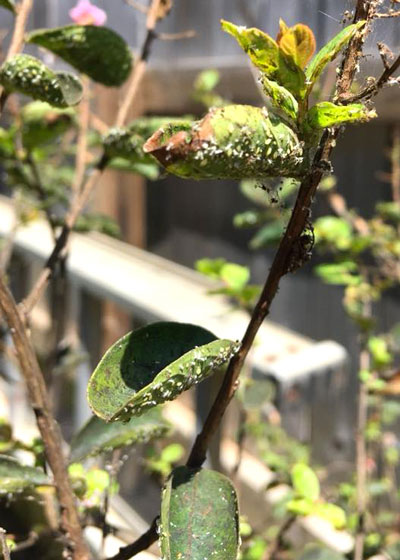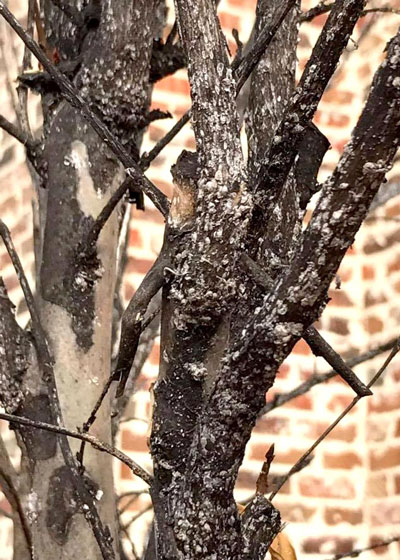Protect your crape myrtles now

Hands down, crape myrtles are the South’s best source of shrub color. They bloom repeatedly from late May clear into early October, and they come in a wide array of shades, with plant heights ranging from 2 to 32 feet at maturity. There is truly something for everybody.
But the downside to all that goodness comes in the form of two pesky insects. Neither will kill your crape myrtles, but both will make them unsightly.
This is the time to treat both insects pre-emptively.

Crape myrtle bark scale…
• First observed in U.S. in Richardson, Texas, in 2004. For several years it remained a North Texas problem, but in the past 6 or 8 years it has spread across the South.
• The pests look like over-sized mealybugs. They are soft-bodied scales that attach to leaves, but mainly to smaller stems and twigs.
• They suck fluids out of the plants, then secrete sticky honeydew residue that drips to surfaces below.
• Spray insecticides do not work as well as systemics. See controls below.

Crape myrtle aphids…
• Long-time visitors to crape myrtles, these congregate on flowers, new growth and leaves.
• They are pear-shaped and BB-sized, and you will usually find dozens of them clustered together.
• They, too, suck sap from the plant, then secrete sticky honeydew in which the sooty mold fungus can grow.

To control the scale and aphids, therefore also the mold…
• Texas A&M research entomologists have worked alongside The Crape Myrtle Trails of McKinney. Additionally, funds have been designated by many southern university and nursery trade organizations to study this pest and its control.
• Current recommendations are the application of a soil drench of Imidacloprid systemic insecticide made around the base of each crape myrtle plant around the middle of May. That gives the insecticide several weeks to be taken in through the roots and to be put into position to be sucked in by either pest as they start feeding.
• Additionally, if you have blackened trunks that are covered with sooty mold, use soft sponges or rags and a big bucket of warm, soapy water to scrub the trunks. It won’t take much to clean them up. Don’t be too abrasive, but do know that a good bit of the old bark is likely to come loose in your hands. It sloughs off annually with the new growth.
